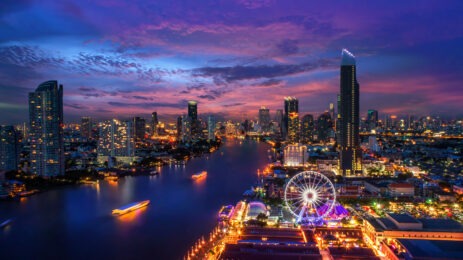Incentive planners are a resilient bunch. They are constantly looking for destinations that will appeal to their attendees. It takes more than high winds and a health scare to keep them away from their favorite resorts.
Attractive, Affordable and Safe
SITE’s recently released Destination Selection Index 2018 report found that, once again, the most important factors in selecting where to go were attendee attitudes and value. This prioritization was even more pronounced for third-party suppliers. Overall safety ranked a close third and was even more important for corporate planners.
Yes to Western Europe and South America
While interest in North America has not recovered yet to the dominant position it had in 2015—when 100 percent of incentive planning included at least one there—it has bounced back from a 2016 low of 85 percent. For trips outside North America—despite terrorist incidents—Western Europe is growing in popularity faster than any other region (up 4 percent to 78 percent), largely at the expense of Central Asia (36 percent) and Eastern Europe (47 percent).
After a drop in interest during the Zika threat in 2016, the Caribbean (74 percent) has now surpassed 2015 levels as an incentive travel destination. South America (50 percent) also continued to move higher on the list as 4 percent more planners said they sent groups to the destination in 2017, compared to 2016.
These numbers reinforce the anecdotal trends SITE President John Iannini has observed. “We have seen throughout the years that Europeans don’t change their buying patterns because of headlines. Whether it is Zika virus or terrorism, they continue to go to the same places,” he said.
Iannini added that threats of laptop bans and a wall at the border of Mexico never had an impact because they didn’t actually happen. “It did create a dialogue, and that can be a good thing, but since it never went into effect, it doesn’t show up in the numbers,” he said.
The survey was completed in early July, before the hurricanes, but Iannini reported he had not anecdotally heard of anyone changing plans in the Caribbean, Florida or Texas because of extreme weather in 2017. “People forget quickly,” he said.
What has been a noticeable change is groups looking for ways to get involved in philanthropy projects and taking trips to support an area after a natural disaster, similar to the outpouring of support that happened in New Orleans after Hurricane Katrina.
Regional Preferences
While international travel played a significant role in incentive trips over the last three years, two regions tended to stay closer to home when booking travel. Australia stayed almost entirely local. North American planners opted for trips to other North American destinations 95 percent of the time. When they did leave, the majority of those from the United States and Canada went to the Caribbean (86 percent) and Western Europe (68 percent).
Companies based in the Middle East and Africa left the area one-third of the time (71 percent stayed in the region) and Western Europeans left the continent one-tenth of the time.
Increased Investment
Overall, the report showed that spending per person has increased from $3,000 in 2016 to $4,000 in 2017. Respondents also reported that they are more optimistic about the world and national economy.
At the same time, they also said they are tracking incentive-travel program return on investment and return on objective more closely than ever.




